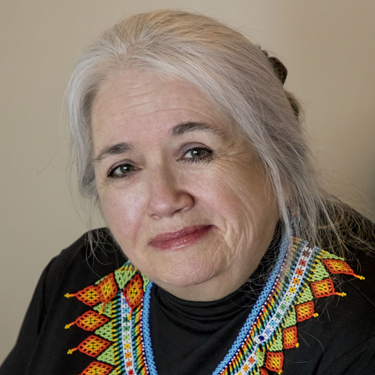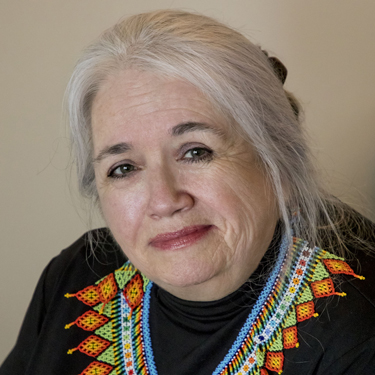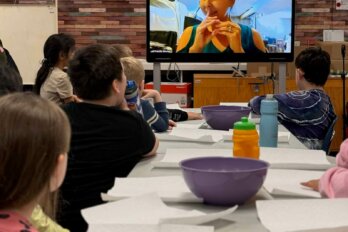 On May 27, news broke that the remains of 215 children were uncovered on the grounds of the former Kamloops Indian Residential School, following the completion of a land survey initiated by members of British Columbia’s Tk’emlúps te Secwépemc First Nation. For author Michelle Good, who is of Red Pheasant Cree descent, it was ostensibly a day of celebration: her debut novel — Five Little Indians, which weaves together the lives of five residential school survivors — was awarded the Amazon Canada First Novel Award that evening, four provinces east. For Good, and legions of other Indigenous Canadians, of course, Kamloops wasn’t news at all.
On May 27, news broke that the remains of 215 children were uncovered on the grounds of the former Kamloops Indian Residential School, following the completion of a land survey initiated by members of British Columbia’s Tk’emlúps te Secwépemc First Nation. For author Michelle Good, who is of Red Pheasant Cree descent, it was ostensibly a day of celebration: her debut novel — Five Little Indians, which weaves together the lives of five residential school survivors — was awarded the Amazon Canada First Novel Award that evening, four provinces east. For Good, and legions of other Indigenous Canadians, of course, Kamloops wasn’t news at all.
One of the central tensions in Good’s debut — which sees its characters grasping for safety and belonging in a world built to deny it to them— seems to be healing generations-deep trauma while, everywhere you look, vestiges of it live on. Here, she discusses the merits of art reflecting life and how the Indigenous identity flourishes even as its wounding persists.
Your win was concurrent with the discovery of the mass grave at Kamloops Indian Residential School. How are you processing those two events occurring so close together?
I don’t think of the news out of Kamloops in context of awards. One good thing is that the award tends to elevate the book in the public consciousness, and if that helps people have additional resources to educate themselves with right now, that’s wonderful. But we are pretty clear that this is not news to Indigenous people, right? People in the area have been aware of this forever. And neither is it news to the government; they’ve known about this for a long time. So it’s not art imitating life; it’s reflecting life.
In the process of healing, there is often a tension between accessing trauma for the purpose of repair and leaving it behind. How did you reconcile that push-pull through the arcs of your characters?
Each of the characters find coping mechanisms that work for them, but whether or not those are actually effective in terms of resolving trauma is another question entirely. We have a couple of characters that don’t make it, because their coping mechanisms are self-destructive. But really, this is what the whole story is about: how these kids come out of [residential schools] carrying the tremendous burden of psychological injury, and how long it takes them to find some kind of peace and the ability to have even a modest life without support, save for each other.
It was interesting to see how the friendships forged during those traumatic times acted both as salves to and living reminders of the past.
Absolutely. The friends are the only ones that understand what happened to them. But they also put clear limits on what they talk about and what they don’t talk about. There are limits of what they’re able to cope with.
What aspects of the Indigenous experience post-residential schools did you want to highlight through your characters?
That the trauma begins before the children even get to the schools. It starts at the moment the RCMP and the church showed up at their doorsteps. Who do we look to for protection and safety and understanding when we’re little kids? Our parents. And what these kids learned at four or five or six years old is that not only can their parents not protect them, there’s nobody that can, and there’s nobody to trust. So regardless of any kinds of physical or sexual abuse that occurred in the schools, those kids were marked. They were scarred for life before they even arrived. This isn’t something that was experienced on an individual basis. This is something that we experienced collectively as a people: 120 years of taking our kids away.
How do the friendships in your book speak to the purpose and importance of community, per Indigenous tradition?
For us, community is really everything. Family, in an Indigenous context, is not a nuclear family. It’s an extended family, an extension of the community itself. That social structure is part of what was being attacked by the whole colonial initiative that is the residential school system. These kids couldn’t go home, which is why I included Maisie and Kenny’s attempts to leave. The damage has already been done so profoundly both to the community and to the kids themselves that the relationships as they remember them don’t exist anymore.
You are a member of Red Pheasant Cree Nation, and your mother was a survivor of the residential school system. Were you thinking of her when writing this?
Some of the stories that she passed on to me are reflected in the book. Lily, the little girl that dies in the novel, was a friend of my mother’s. She was a real child, and my mother watched her hemorrhage to death from tuberculosis.
The mandate of these schools was essentially to “kill the Indian in the child.” One of Clara’s lines actually makes that explicit: “Neither of us survived, even though I am still walking.” What would make the rehabilitation of Indigenous culture possible after that level of devastation?
The children that walked into that school are not the children who walked out. But the big surprise for the colonial endeavor is that we’re still here, even though we continue to suffer. We are still here with our traditions, with our ceremonies, with our way of being. It’s not an easy road by any stretch of the imagination, and it’s not without scars from all of the initiatives that were intended to eliminate us completely, to wipe us off the face of the earth — but we’re still here.




